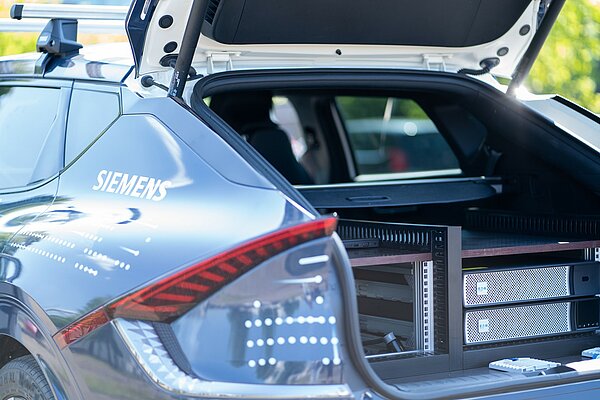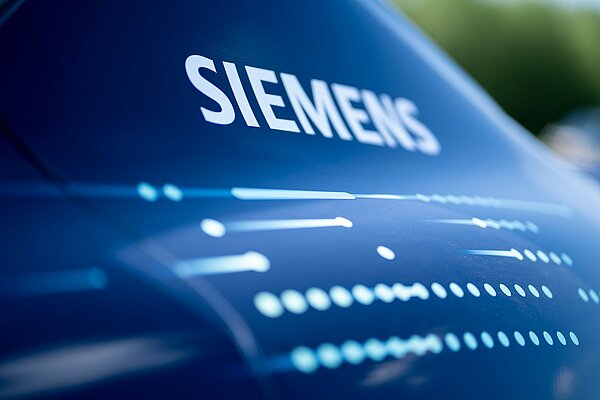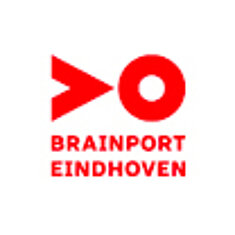Interview with Jeroen Ploeg from Siemens, partner of the DITM project.

Interview with Jeroen Ploeg from Siemens, partner of the DITM project.
DITM stands for Digital Infrastructure for Future-Proof Mobility. It is a national project subsidized by the Dutch government. Within the project, Brainport Development and RAI Automotive Industry NL work together with partner companies on the implementation of the digital infrastructure for automated transport. This allows us to make our mobility more efficient and safer.
Aspects include the analysis of the traffic safety of autonomous vehicles based on 'digital twins', supported by the digital infrastructure to be developed in DITM. Much attention is also paid to innovative digital map production systems that produce and update maps based on continuous sensor observations of the road infrastructure and the increasing number of 'smart' vehicles on the road.
Introduce yourself!
My name is Jeroen Ploeg and I work for Siemens Digital Industries. Siemens is a large company with around 330,000 employees worldwide. Digital Industries is just a small part of it, but with 70,000 people, it is still large. My team is involved in autonomous driving, and my role is fellow scientist. In this role, I work with universities on future Siemens products. Within DITM, I fulfill the technical lead and project management role for Siemens.
What are you working on in the DITM project?
Siemens wants to provide the software for verifying and validating autonomous vehicles. Autonomous driving does not necessarily have to take place in the literal sense. We also see driver assistance as part of autonomous transport. There are quite a few steps needed to transition to this type of transport.
In the early days, for example, we drove around with measurement vehicles hoping to encounter all traffic scenarios to gradually develop the system. That was quite time-consuming and expensive. Moreover, the entire vehicle was already outdated by the time we were finished. So, you actually want to test virtually.
By driving a model around in a virtual world, testing becomes more efficient, effective, and cheaper.
Siemens wants to provide various types of software for this. This software consists of components such as simulation software and software to measure and categorize traffic scenarios. In this way, you hope to be able to test your vehicle virtually. Siemens' goal within DITM is to further develop the software chain and apply it to the use cases in the project. This goal also contributes to Siemens' roadmap.
An example of such a use case within DITM is about connected vehicles. Part of DITM is CCAM (Connected and Cooperative Automated Mobility). These are vehicles that not only drive autonomously or have autonomous functions but are also connected to other vehicles or the infrastructure. One application of this is GLOSA (Green Light Optimized Speed Advisory). This means that the vehicle receives information from the traffic light about when it will turn green. The speed profile is then adjusted accordingly. This means that the software takes this information into account, allowing the vehicle to brake gently, possibly arriving at the traffic light just as it turns green, and then accelerating smoothly again. This is especially important for buses, as a bus also carries standing passengers. Hard braking for a red light is not convenient in that case.

With GLOSA+, there is the possibility that a vehicle can request a green light. GLOSA+ is an application that we also want to evaluate virtually. In work package two, we specifically create a model or digital twin for this component. In work package five, we use this digital twin to analyze safety.
We are also involved in work package four of DITM, which focuses on Digital Maps. One of the partners in this work package is the navigation software expert TomTom. They are investigating the use of crowdsourcing maps, where they want to use data from all new generation passenger cars to map the current situation of the infrastructure, road markings, and other 'features'. Something changes almost daily. An accurate and up-to-date road image is essential for autonomous functions in road transport.
The cameras on these cars may not be the most accurate, but they do provide a lot of measurement data. The idea is that the amount of data can still provide an up-to-date picture of the road. The tricky part is that it is difficult to test. You use cameras that are integrated into millions of cars and cannot be controlled individually. Logically, you end up with simulation, which is exactly what we are good at. One product of Siemens is the simulation software Prescan. This software creates an accurate environment, resulting in an accurate visualization where you can drive around with a vehicle. We generate the same data that TomTom uses to create maps. In this way, we can test the effect of other innovative cameras.
Why is it important for you to participate?
Our main goal is, of course, to eventually generate revenue with the specific software. We develop software with customer projects, but also in a subsidized project like this. The beauty of this is that we realize Siemens' roadmap with it. Additionally, I find it important to contribute to a Dutch ecosystem. Germany has a very strong ecosystem in the automotive industry, so it is important that we have mass as a country to counterbalance that. Together you are stronger if you want to have a say in Europe. That is also why the partners are very important to us.

How do you see your role as a company in the future of Smart Mobility?
Smart mobility brings significant changes, and we still have some steps to take as a country. Technological development and the use of AI continue. We want to create software that anticipates all these changes and can be used by car manufacturers and suppliers to improve their products. We see our role as a supplier industry in software tools. That is our mission.
Ultimately, we hope to develop software that allows the RDW to not only validate a vehicle but also certify it. My ultimate dream is that we can support the entire process up to type approval. This means that we not only have to provide software but also have a vision of the European procedures that apply to it. The tangle of procedures and standards is changing rapidly. It is complex matter. Additionally, there are differences within Europe; in Germany, for example, the regulations are more lenient than in the Netherlands. This also has to do with history. Everyone can still remember the Stint drama. Before that accident, a lot was allowed. I could just go on the road with an autonomous vehicle and replace the software while driving. After the Stint accident, that was over in one fell swoop. That did have a setback, I must say.
Which parties would you like to collaborate with, and for what purposes can people contact you?
We are looking for parties that help strengthen the Dutch ecosystem. We work with the usual suspects in the automotive industry, such as DAF and VDL, and it is good to intensify the collaboration with RDW. Transporters are not yet involved in the project, while they are an important party to test a business case such as autonomous transport on hub-to-hub routes. These innovations make the transport process fundamentally different, so this input is very relevant. Additionally, we are always interested in collaboration with the supply industry, OEMs, and car manufacturers worldwide.
Finally, what I would find fantastic is if the Automotive Campus in Helmond gains the same status and allure as the High Tech Campus in Eindhoven. The municipality of Helmond has played a very important role in the creation and success of the Automotive Campus. I hope they continue to do so and that many more beautiful automotive companies join.
